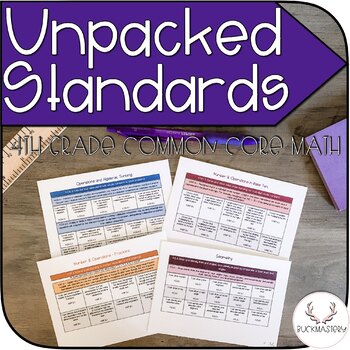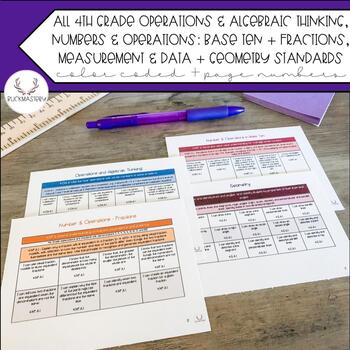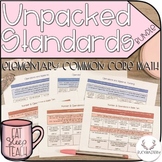Unpacked Standards - 4th Grade Common Core Math
- PDF
Also included in
- This resource includes:All strands of the 1st, 2nd, 3rd, + 4th grade Operations and Algebraic Thinking standard, broken into student-friendly learning goals.All strands of the 1st, 2nd, 3rd, + 4th grade Number and Operations in Base Ten standard, broken into student-friendly learning goals. All straPrice $8.00Original Price $10.00Save $2.00
Description
Help your student meet the standards by assigning them one aspect of it at a time!
This resource is all of the 4th grade math standards broken down into attainable learning goals. It will allow you to zero in on where your student is struggling so that you are better able to help them reach the standard. It will also help you to organize your lesson planning so that you're hitting each learning goal and building up to hitting the whole standard.
This resource includes:
- All strands of the fourth grade Operations and Algebraic Thinking standard, broken into student-friendly learning goals. (4.OA.A, 4.OA.B, and 4.OA.C)
- All strands of the fourth grade Number and Operations in Base Ten standard, broken into student-friendly learning goals. (4.NBT.A and 4.NBT.B)
- All strands of the fourth grade Number and Operations - Fractions standard, broken into student-friendly learning goals. (4.NF.A, 4.NF.B, and 4.NF.C)
- All strands of the fourth grade Measurement and Data standard, broken into student-friendly learning goals. (4.MD.A, 4.MD.B, and 4.MD.C)
- All strands of the fourth grade Geometry standard, broken into student-friendly learning goals. (4.G.A)
- All strands of the Standards for Mathematical Practice. (SMP #1-8)
Students can check off each learning goal as they master it until they eventually achieve mastery!
Teaching 1st Grade, 2nd Grade, 3rd Grade, or interested in seeing the vertical development of these skills and knowledge sets?
Check out:
Unpacked Standards - 1st Grade Common Core Math
Unpacked Standards - 2nd Grade Common Core Math
Unpacked Standards - 3rd Grade Common Core Math
You can see how the standards progress by getting this as part of a growing bundle!
Unpacked Standards - Elementary Common Core Math GROWING BUNDLE
Find me on Instagram and Pinterest!
Instagram: @Buckmastery Pinterest: Buckmastery





